
Milkweeds are blooming now here in New Hampshire but so far I’ve only seen one monarch butterfly. If past years are any indication they’ll increase in numbers as summer passes. Though I grew up walking through fields of milkweed I never really saw how pretty the flowers were until I started photographing them. Cameras help you see, and anyone really interested in nature should have one whether they show the photos to anyone or not.

Fringed loosestrife (Lysimachia ciliata) gets its common name from the fringe of hairs on its leafstalks. You can just see them in this photo where the flower stalks meet the leafstalks. When the flowers appear they face the ground and look as if their faces are pasted to the leaves, as can be seen in this photo. It is this habit which makes it easy to tell this plant from whorled loosestrife (Lysimachia quadrifolia,) which has very similar flowers that face outwards.

Each fringed loosestrife flower is about an inch across. Though it appears to have 5 petals they are actually 5 petal like lobes with pointed tips. Each flower has 5 stamens and a slender style. The flower produces both pollen and floral oil (instead of nectar) and is pollinated by oil bees that only feed on Lysimachia species, like nude yellow loosestrife bees (Macropis nuda.) They roll tiny pollen balls using the oil and pollen and feed them to their young. Native Americans used all of our yellow loosestrifes medicinally for various ailments, usually in the form of tea.

Hedge bindweeds (Calystegia sepium) have just started blooming. When I was a boy all I ever saw were pure white flowers but now I see far more bicolor pink and white flowers than the pure white ones, even though they are the same species. We kids used to call them morning glories but they aren’t that plant.

Bindweeds are perennial and morning glories are annuals and one good way to tell them apart is by their leaves; morning glory (Ipomoea) has heart shaped leaves and bindweed has narrower arrowhead shaped, triangular leaves. You can just see an out of focus leaf or two in this photo.

Meadowsweet (Spirea alba) grows in the form of a small shrub and is in the spirea family, which its flowers clearly show with their many fuzzy stamens. The flowers are fragrant and have a sort of almond-like scent. I almost always find it near water.

I usually find arrow leaf tearthumb (Polygonum sagittatum) by feeling it rip at my clothes when I walk through tall grass. It is in the smartweed family, which gets its common name from the way your tongue will smart if you eat its peppery parts. Though the flower buds in this family of plants seem like they never open they do, sort of. They look like they only open about halfway though and I find the buds as pretty as the blossoms. This plant is a kind of rambler / sprawler that winds its way over nearby plants so it can get as much sunshine as possible. It often grows in deep shade but it will also grow in full sun.

Tearthumb got that name because it will indeed tear your thumb or any other body part that comes into contact with it. Many a gardener has regretted trying to pull it up without gloves on, because when the small but sharp barbs (prickles, botanically) along its stems slip through your hand they act like a saw and may make you sorry that you ever touched it. They point down toward the soil so when you pull up on it you get a nasty surprise. The plant uses these prickles for support when it climbs over other plants, and they work well. Sometimes the stems and prickles are red but in this example they were green. Tearthumb is considered a wetland indicator because it likes to grow in very moist to wet soil. I almost always find it near water, often blooming quite late into summer.

Narrow-leaf cow wheat seems like a humble, shy little thing but it is actually a thief that steals nutrients from surrounding plants. A plant that can photosynthesize and create its own food but is still a parasite on surrounding plants is known as a hemiparasite. Its long white, tubular flowers tipped with yellow-green are very small, and usually form in pairs where the leaves meet the stem (axils). I find this plant growing in old, undisturbed forests. It looked like something had been eating the leaves of this one.

The common orange daylily (Hemerocallis fulva) doesn’t have Lilium in its scientific name because daylilies aren’t a true lily. It’s a plant you’ll find growing near old stone cellar holes out in the middle of nowhere and along old New England roads. It is also found in cemeteries, often planted beside the oldest graves. It is one of those plants that were passed from neighbor to neighbor and spread quickly because of it. These days it is called the “ditch lily” and is one of those plants that new homeowners go out and dig up when they can’t afford to buy plants for their gardens. It is both loved for being so easy to grow and hated for being so common. It was introduced into the United States from Asia in the late 1800s as an ornamental.
By the way, daylilies are not “tiger lilies.” There is only one tiger lily and that is Lilium tigrinum, now called Lilium lancifolium.

I was reading one of my favorite blogs, Saratoga Woods and Waterways, when I saw something I had never seen; the flowers of deer tongue grass (Dichanthelium clandestinum.) For those not familiar with this native grass, its common name comes from the way its leaves resemble a deer’s tongue.

This is what the flower heads of deer tongue grass looks like; tiny beads (spikelets.) Each one is about a sixteenth of an inch around. The odd looking background in this shot is the granite rock the grass was leaning over.

And here are the brushy flowers (stigmata,) so tiny I didn’t think I’d ever get a photo of them. I finally had to put a piece of white paper behind them so my camera could find them. They’re one of the smallest things I’ve ever tried to show you. If you read the Saratoga Woods and Waterways blog you too will discover beautiful treasures like these.

If you like the look of deer tongue grass there is at least one variegated cultivar that I found in a local park. I’ve tried to look it up but couldn’t find it, so I’m afraid I know nothing about it.

Deptford pink (Dianthus armeria) is also called grass pink and will often reach two feet tall. They don’t always grow in the same large clumps as their cousins the maiden pinks (Dianthus deltoids) do, and they also don’t have the same bold, jagged, deep maroon ring near their center as maiden pinks do. The petals on Deptford pinks are narrower as well. Both plants are originally from Europe and have escaped cultivation. Maiden pinks seem to prefer open lawns and meadows while Deptford pinks hide their beautiful little faces in the sunny edges of the forest.

This flower shows that Deptford pinks don’t always have five petals. The name Deptford comes from the area in England where they used to be common.

Silky dogwoods (Cornus amomum) are the last of our native shrubby dogwoods to finish blooming in this area, following the gray and red osier dogwoods.

The flowerheads of silky dogwoods are quite flat, not mounded like those of gray dogwood.

Both gray and red osier dogwoods have white berries. The silky dogwood will have berries that start out green, then blue and white and then turn fully blue. They are beautiful things that always remind me of blue and white Chinese porcelain. Cedar waxwings love these berries and they come to the river bank where the dogwoods grow each year to eat their fill.

We have three native wild roses here in the U.S., the Virginia rose (Rosa virginiana,) the prairie rose (Rosa arkansana) and the wild rose (Rosa acicularis.) We also have roses that appear to be wild but which have escaped cultivation. None are truly invasive here and I think it’s safe to say that all are welcome. I found this beautifully scented example near a stream.

I’ll never forget the day I was walking down a trail through a swamp and saw this orchid growing in a shaft of sunlight. It was such a beautiful thing, but finding it in a swamp was a bit surreal. I remember having a hard time understanding what I was seeing.

I hurried through the wet swamp muck to reach it and realized that I had stumbled upon one of the most beautiful flowers I had ever seen. It was a two foot tall greater purple fringed bog orchid (Platanthera grandiflora) and it looked like a bush full of exotic butterflies. That first time there were two plants but now there is only one. It has reappeared at the end of June for several years now, and each year I feel very lucky to have seen it.

I can only stand and look when I see it. It makes me quiet and strikes me dumb, lost in its beauty. Once I get around to them photos are easy; how can you take a bad photo of something so beautiful? I’ve read that the flowers are pollinated by large butterflies and moths, but I’ve never seen an insect near them. I do hope they get pollinated and produce plenty of seeds. I’ve read that there was a time when the swamps were full of them. I can’t think of anything I’d rather see more.
In every man’s heart there is a secret nerve that answers to the vibrations of beauty. – Christopher Morley
Thanks for coming by.






















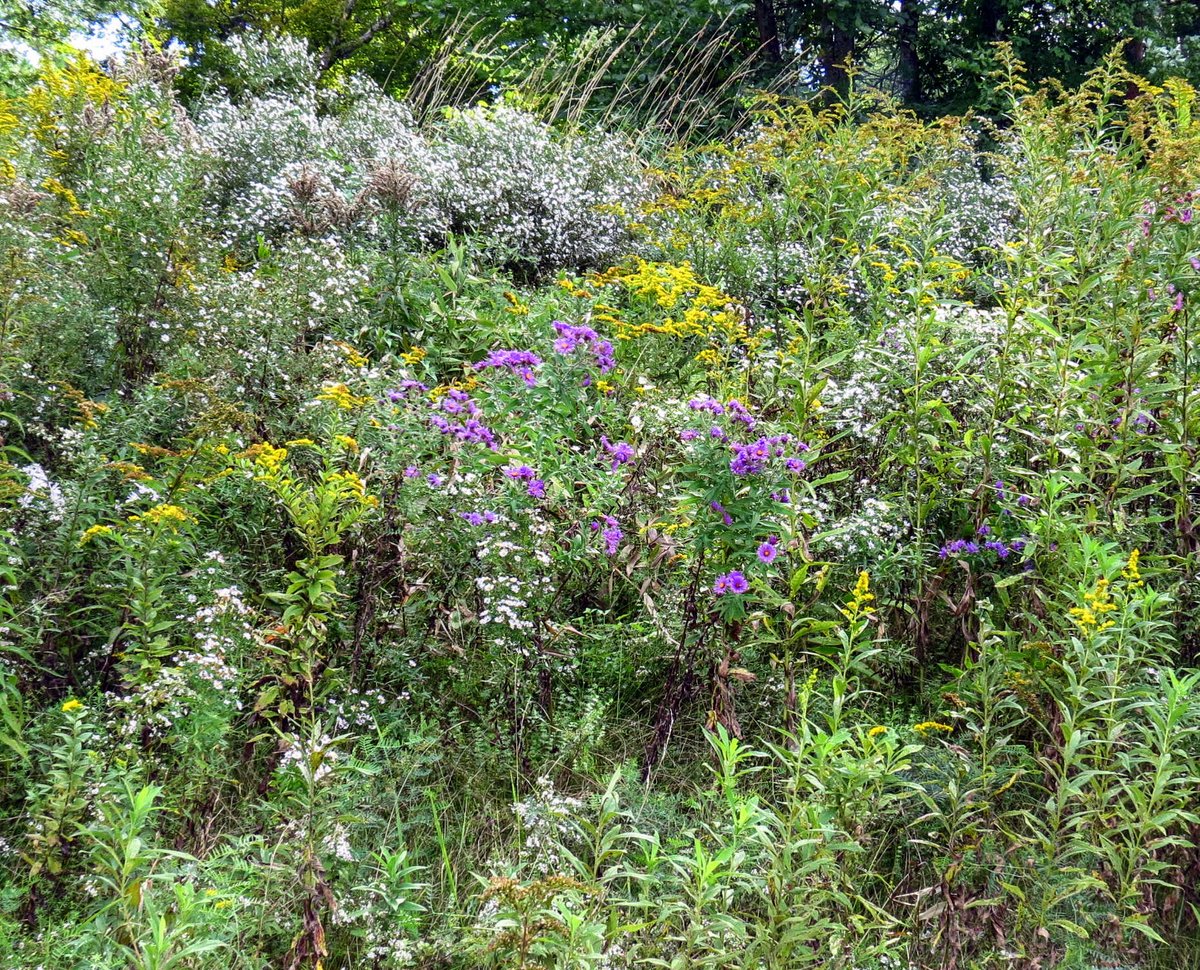


























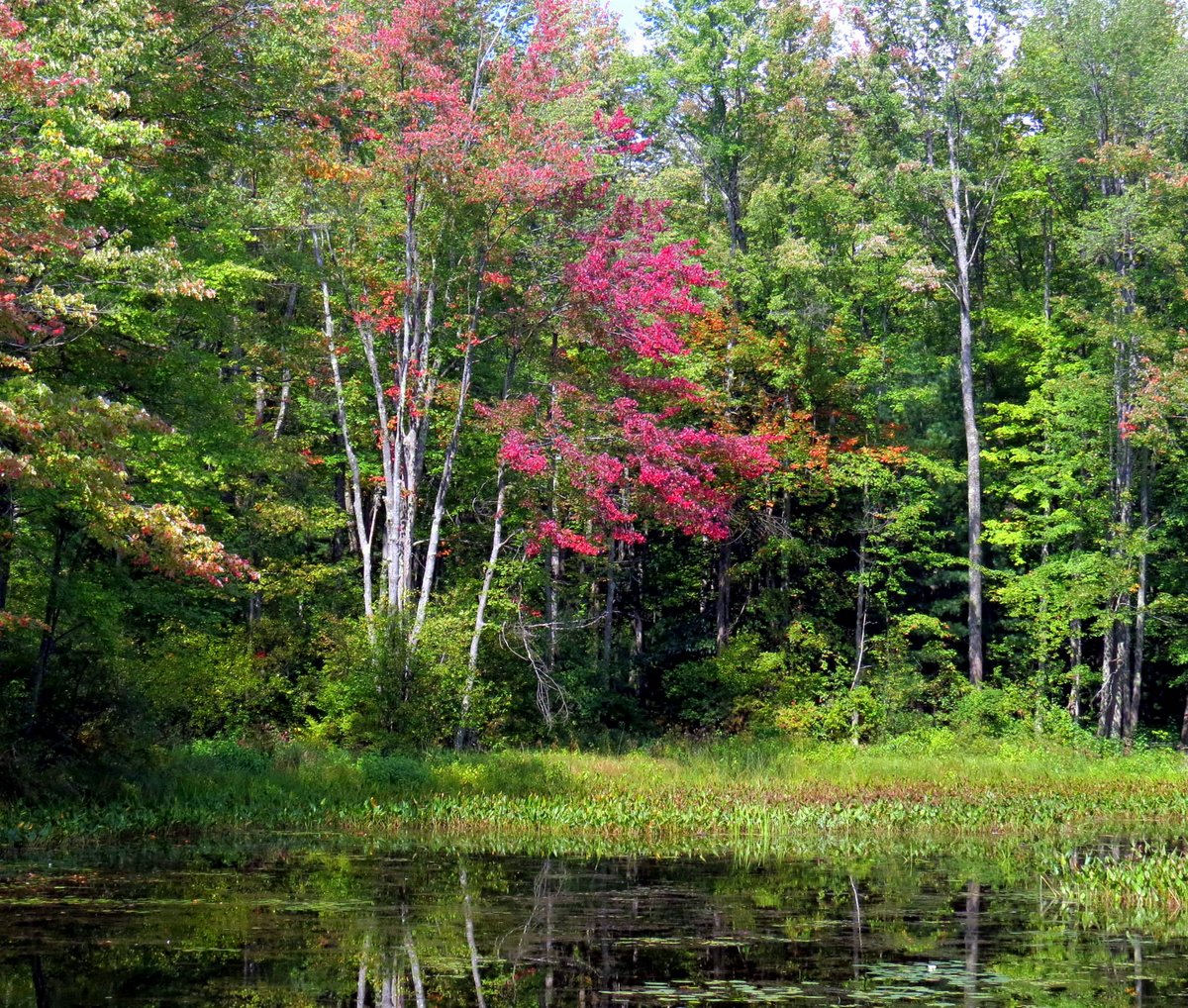




























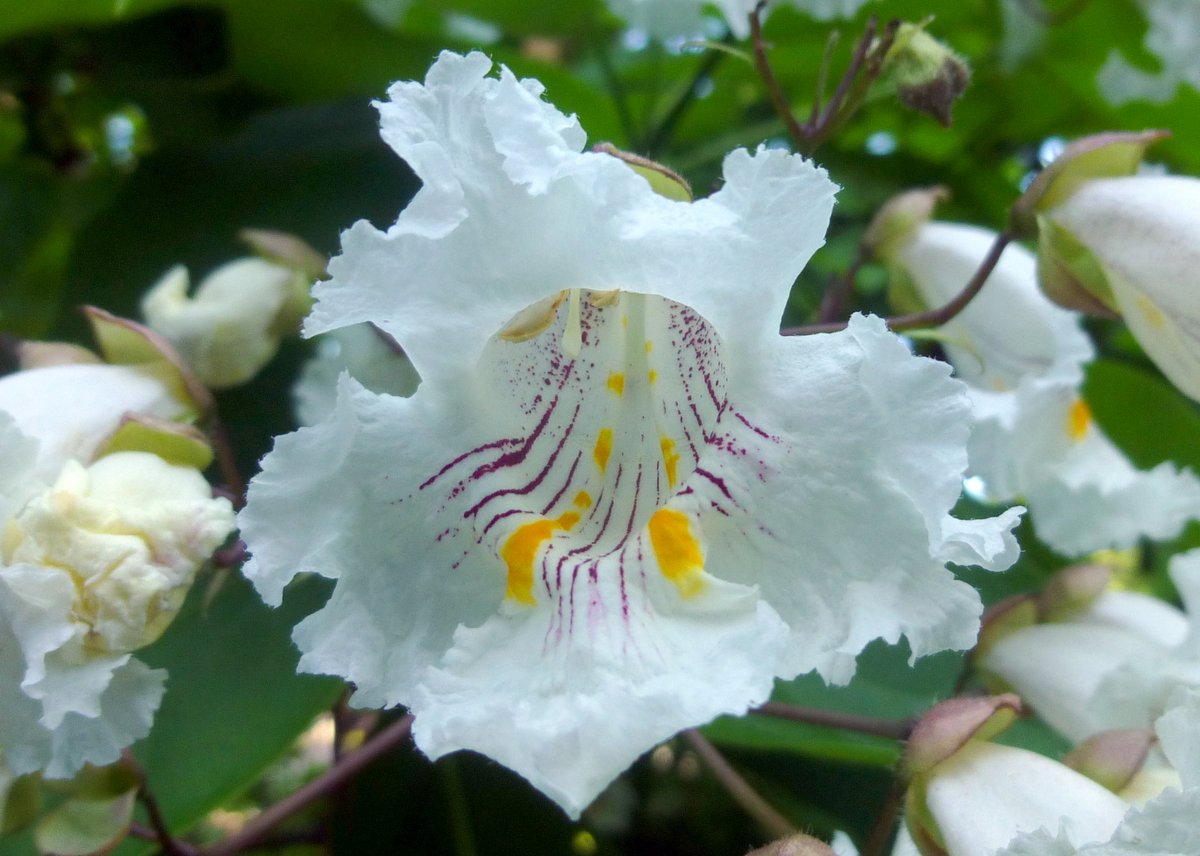

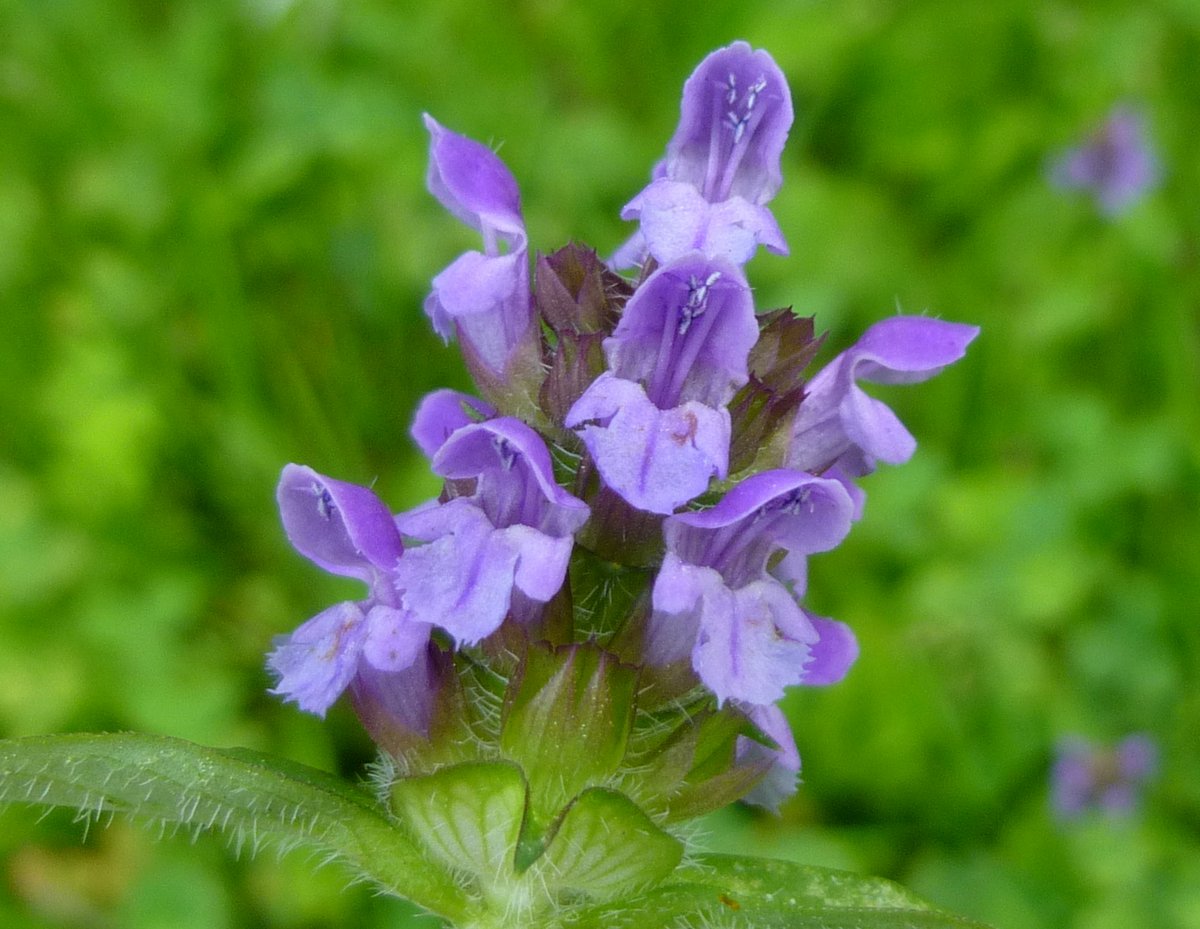
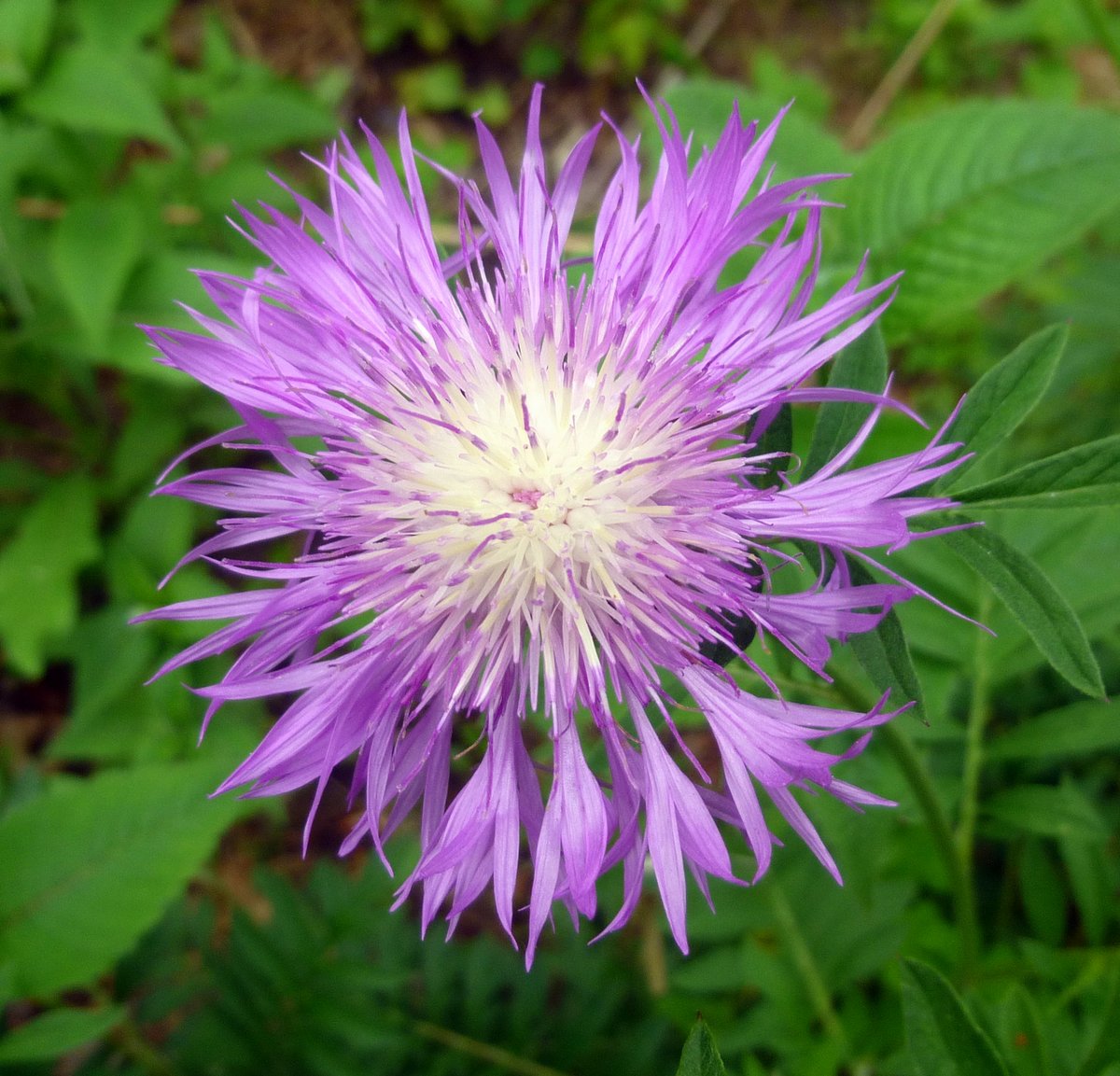
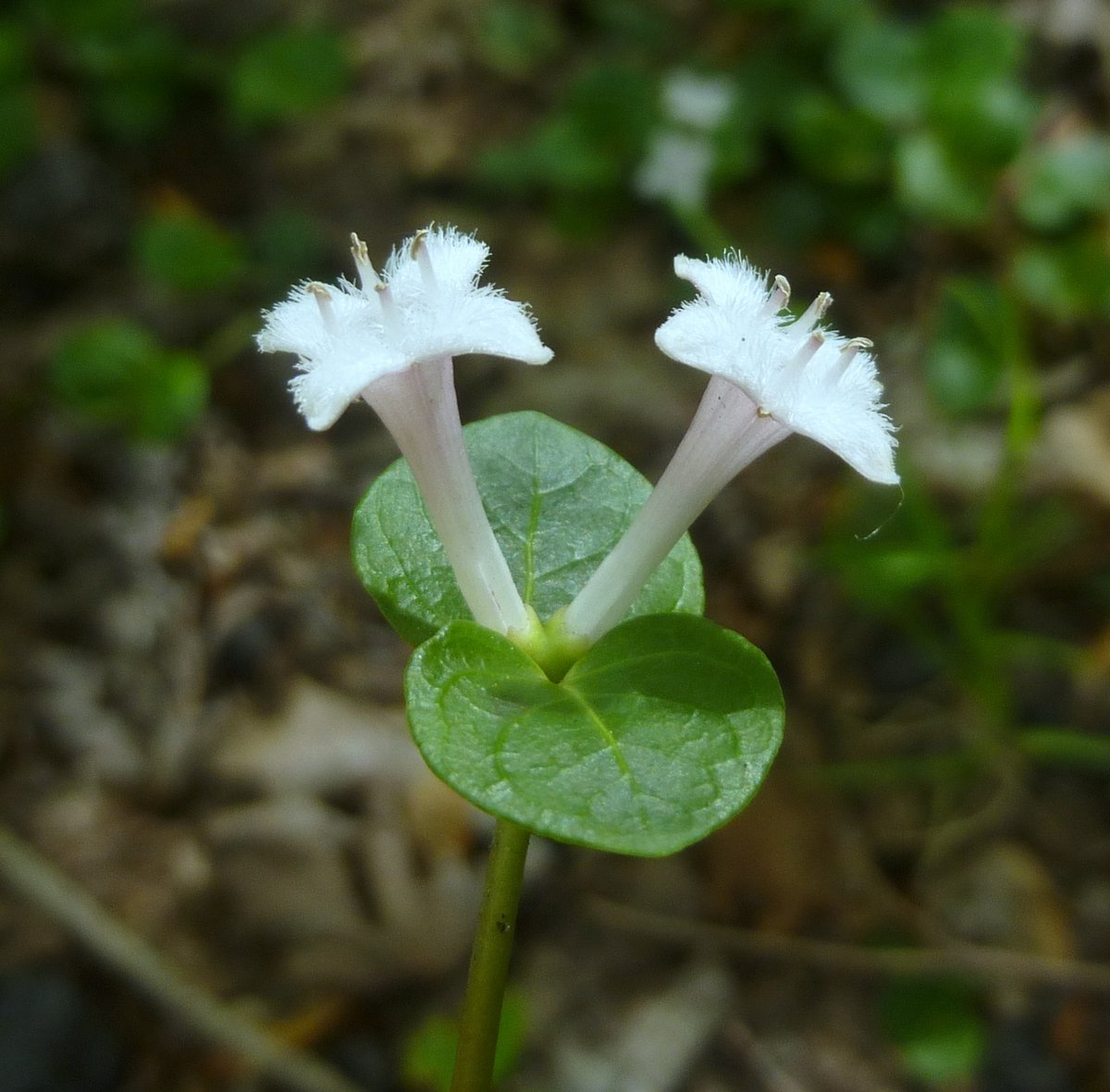
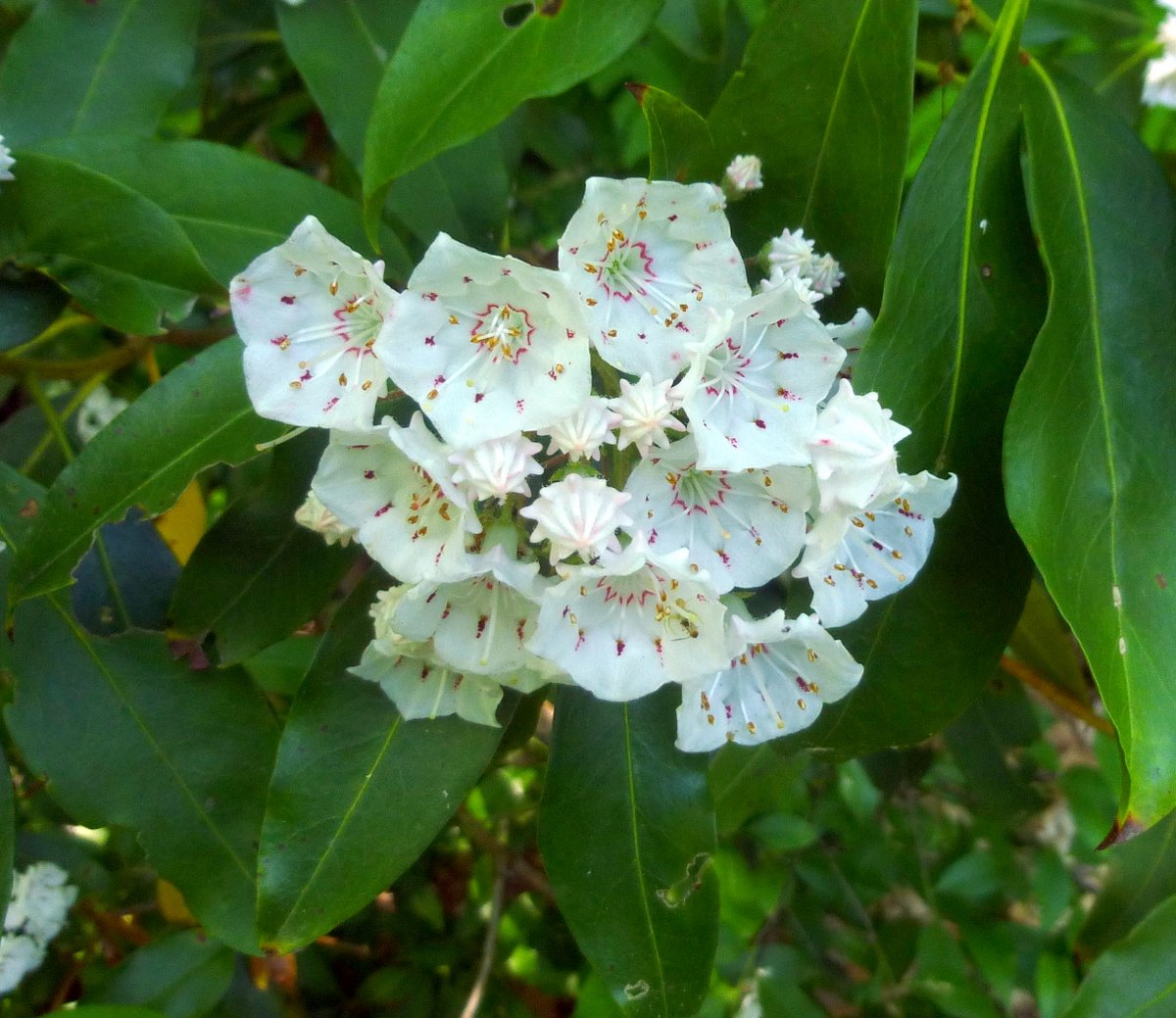


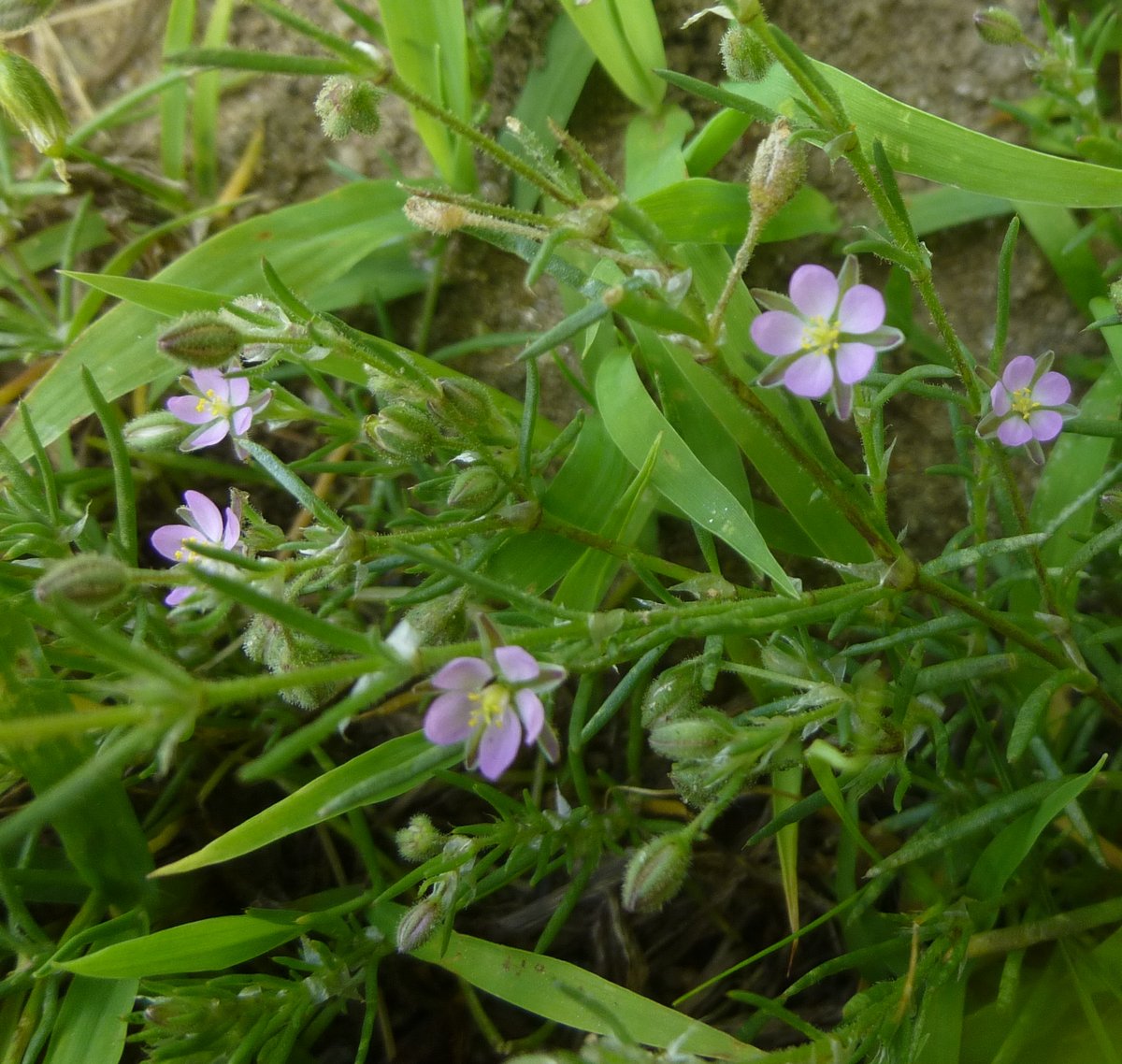
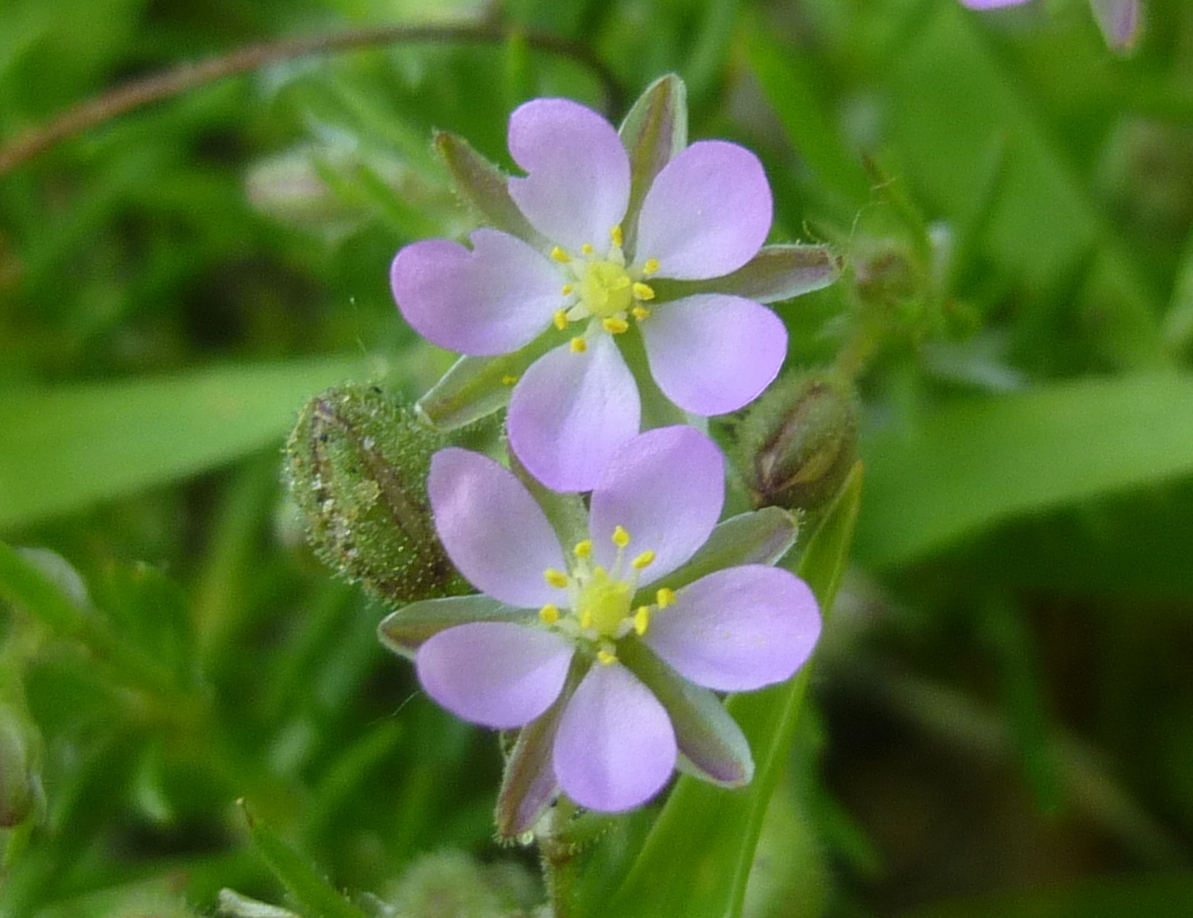

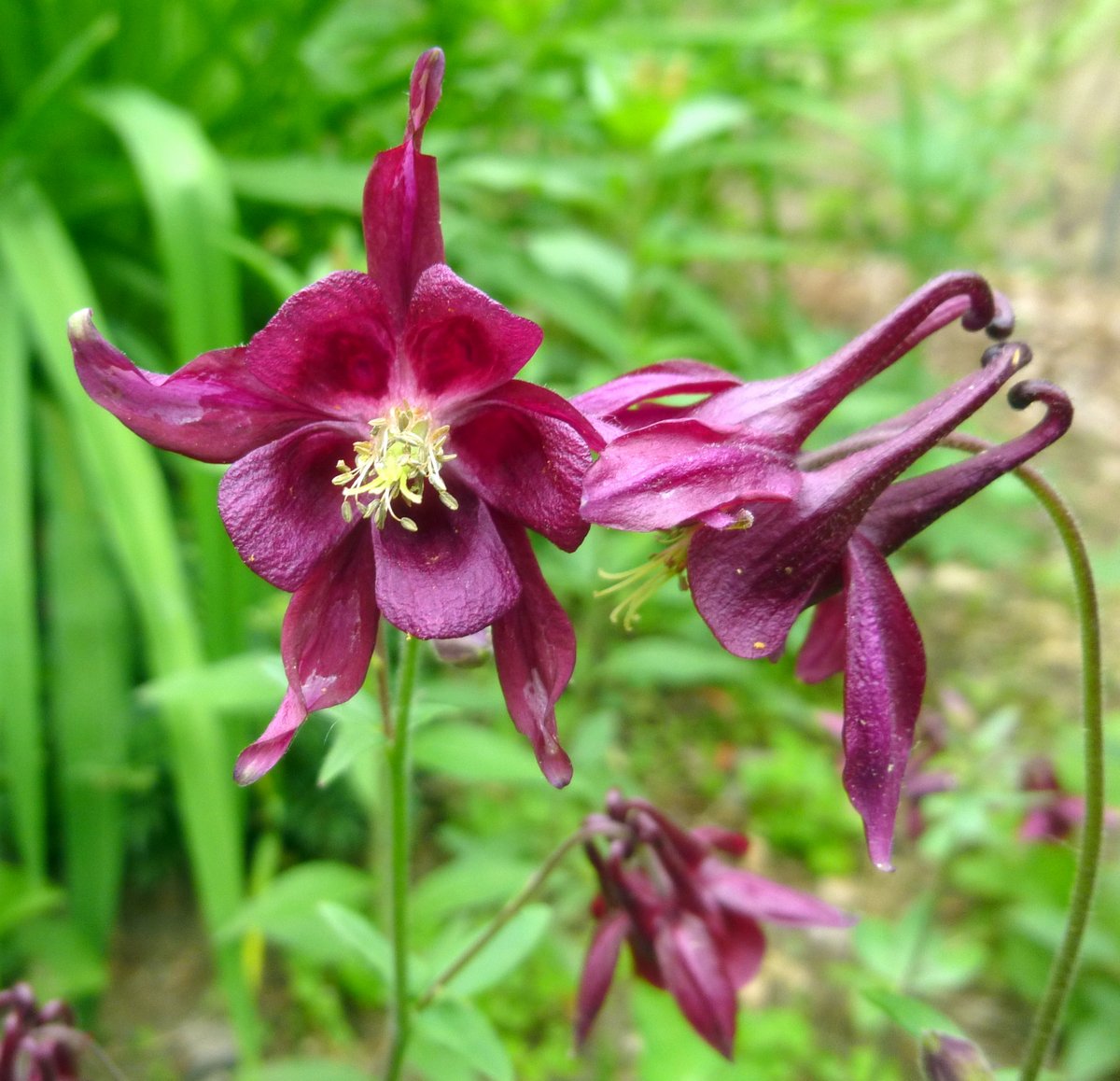

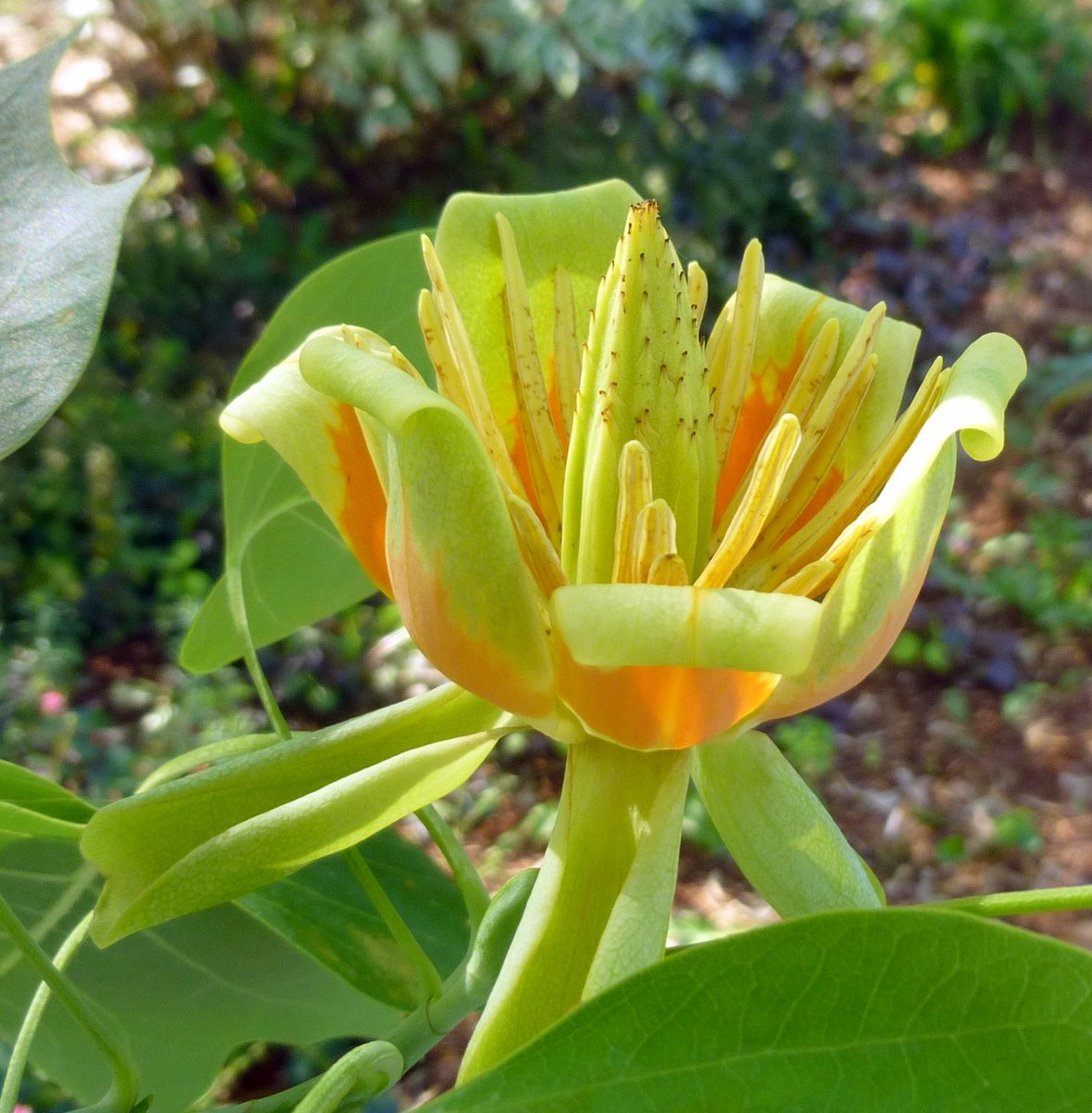
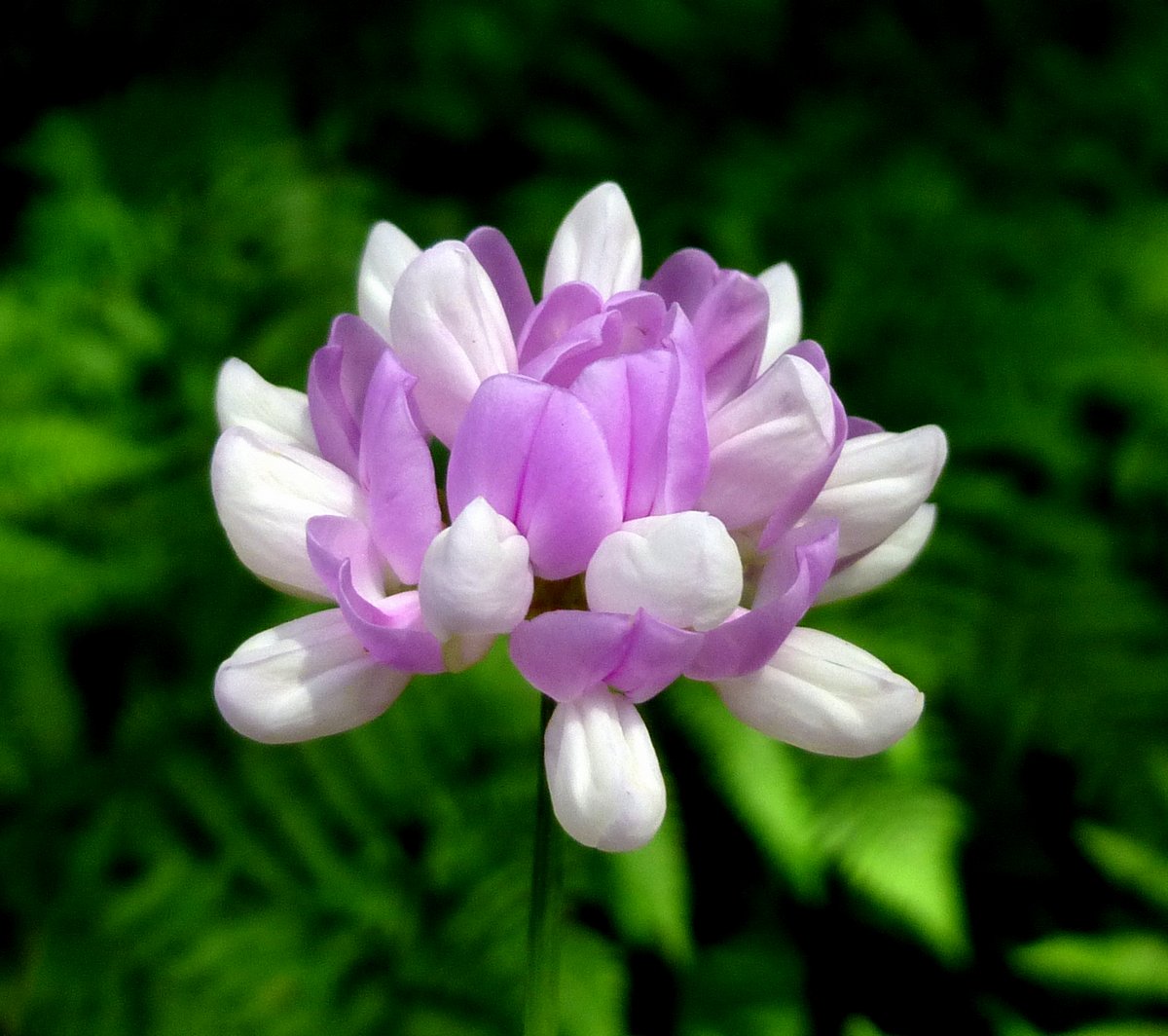
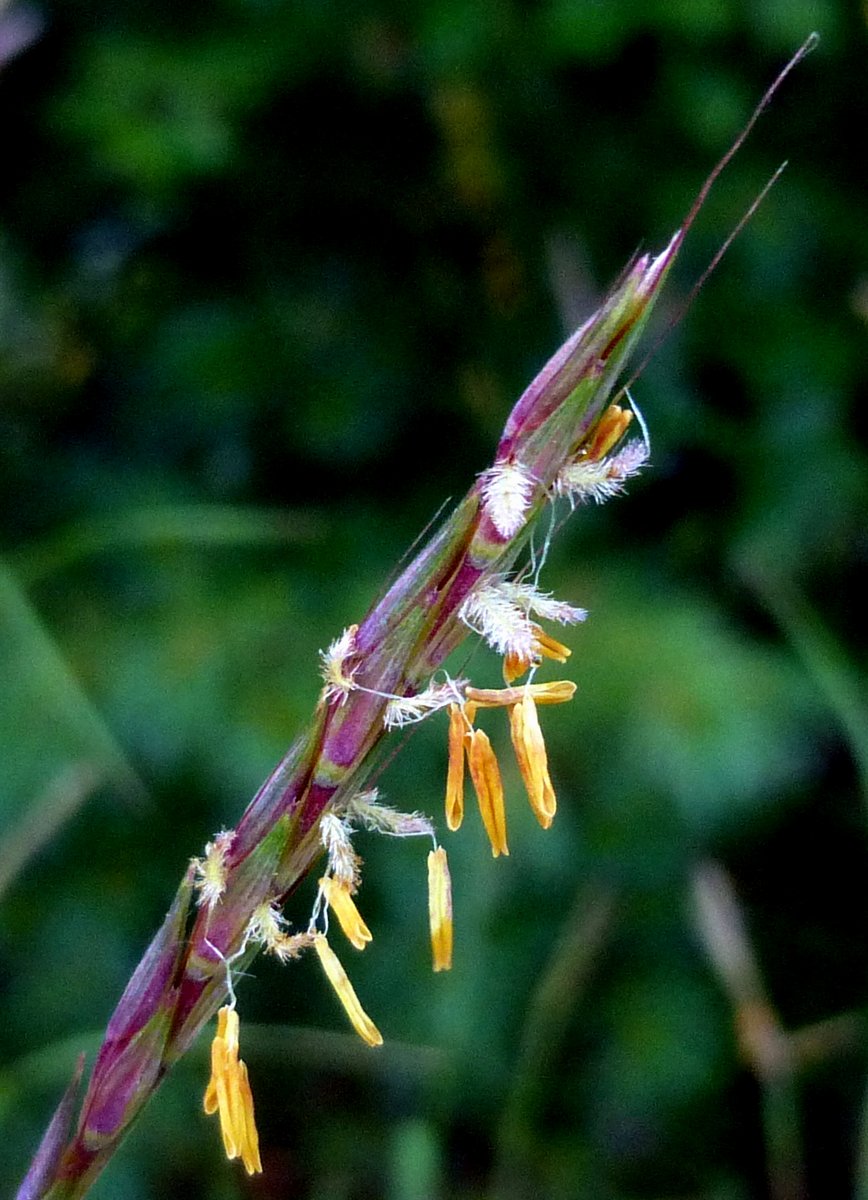
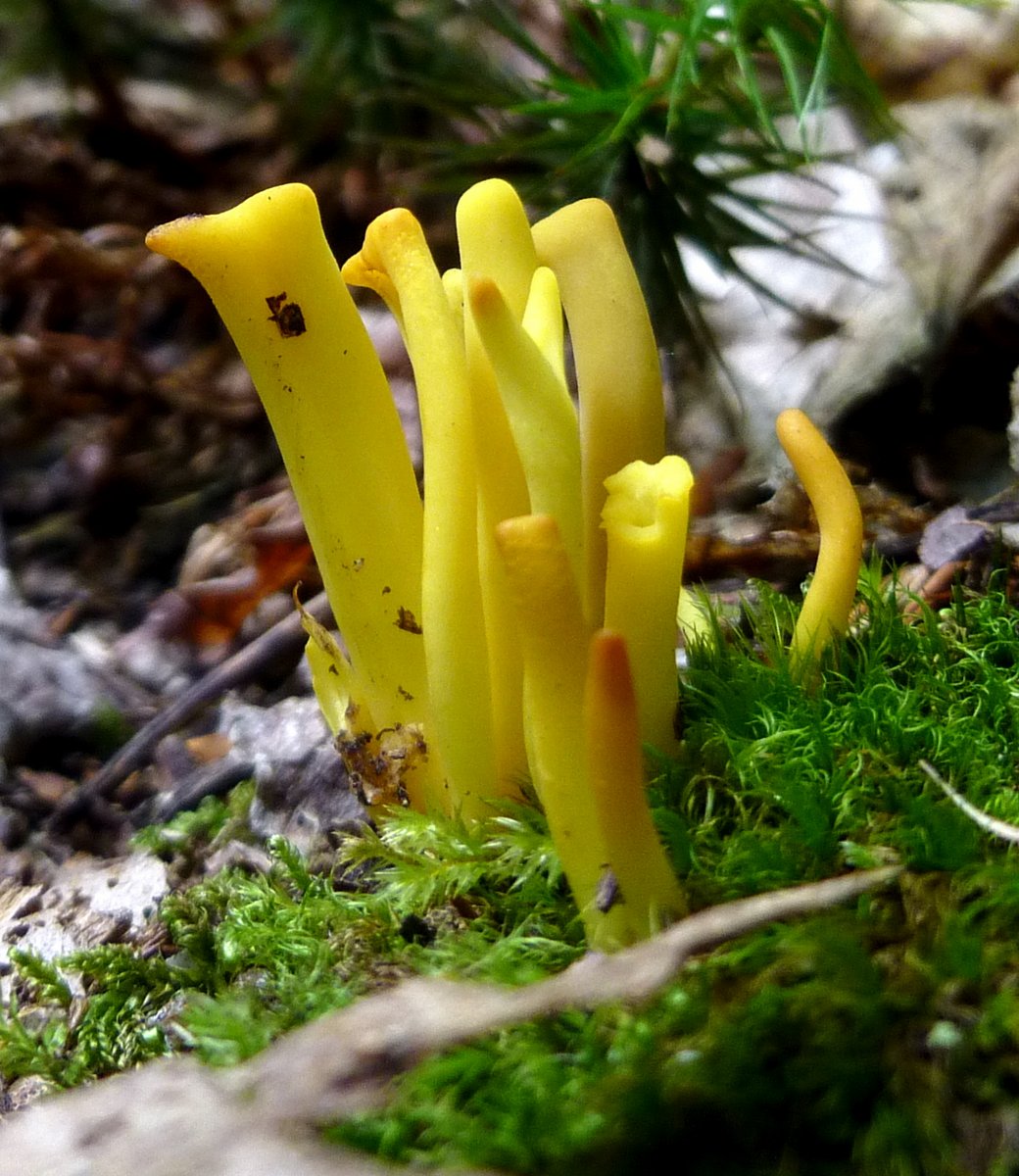
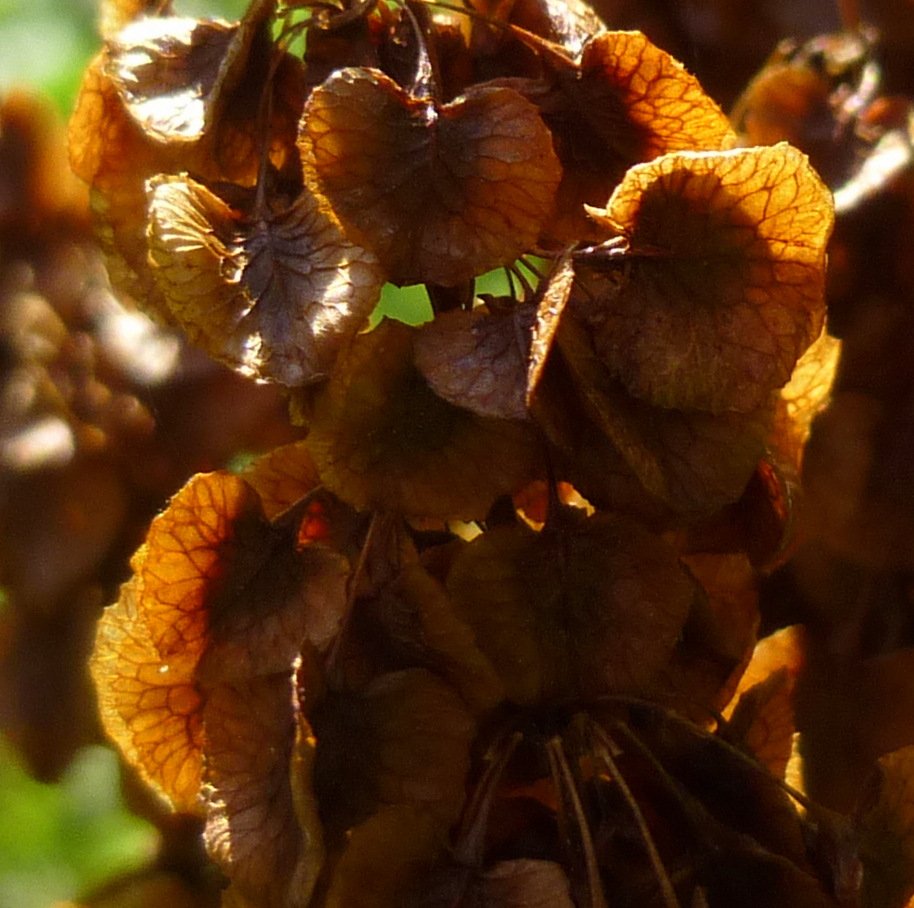
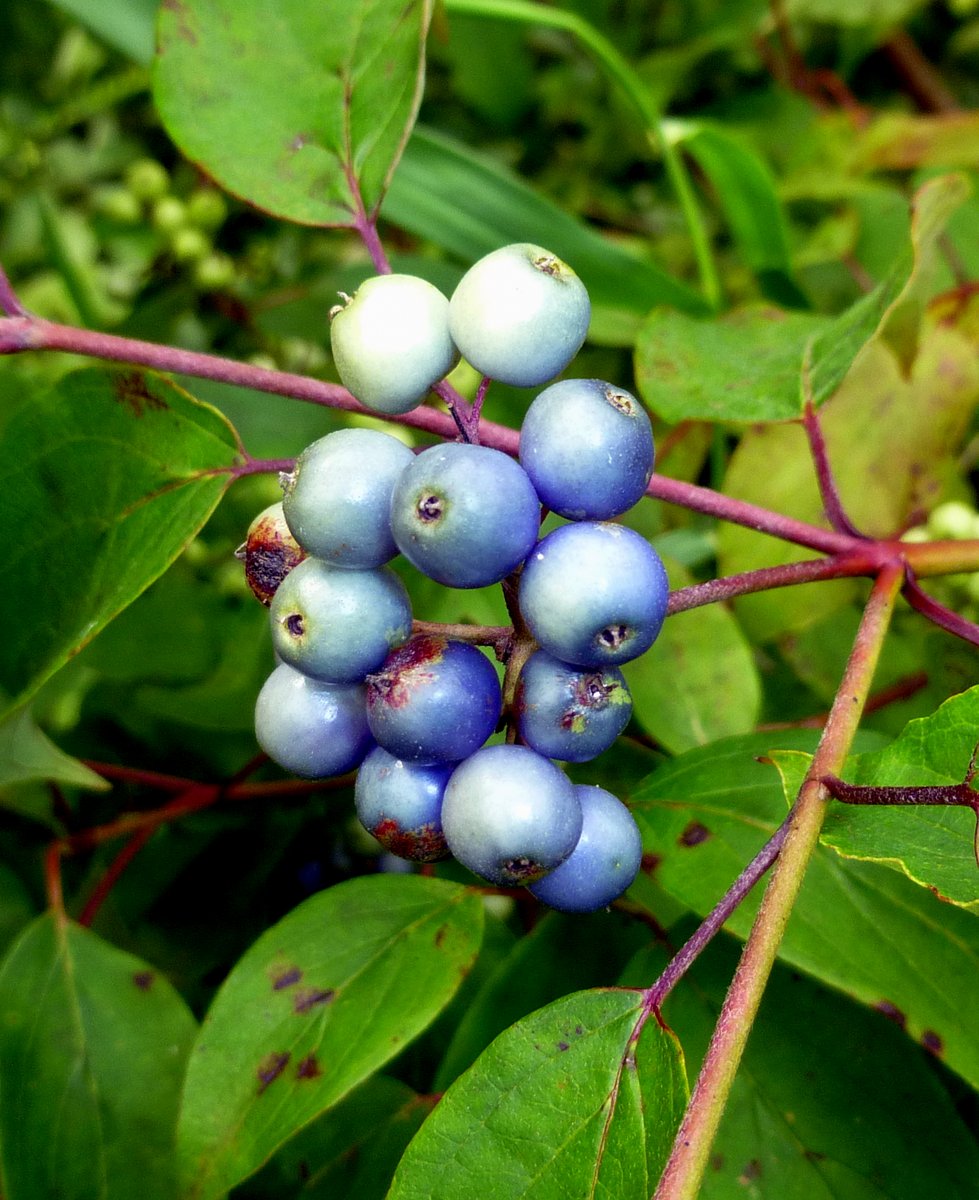

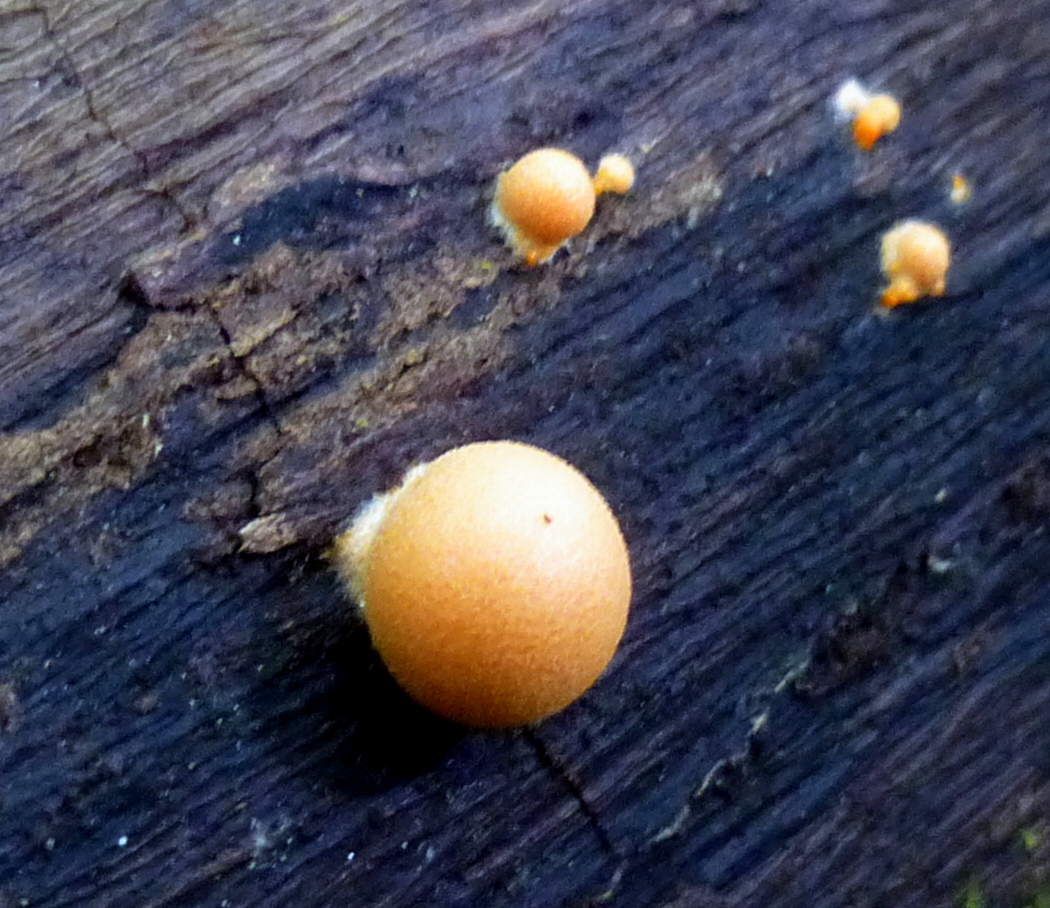




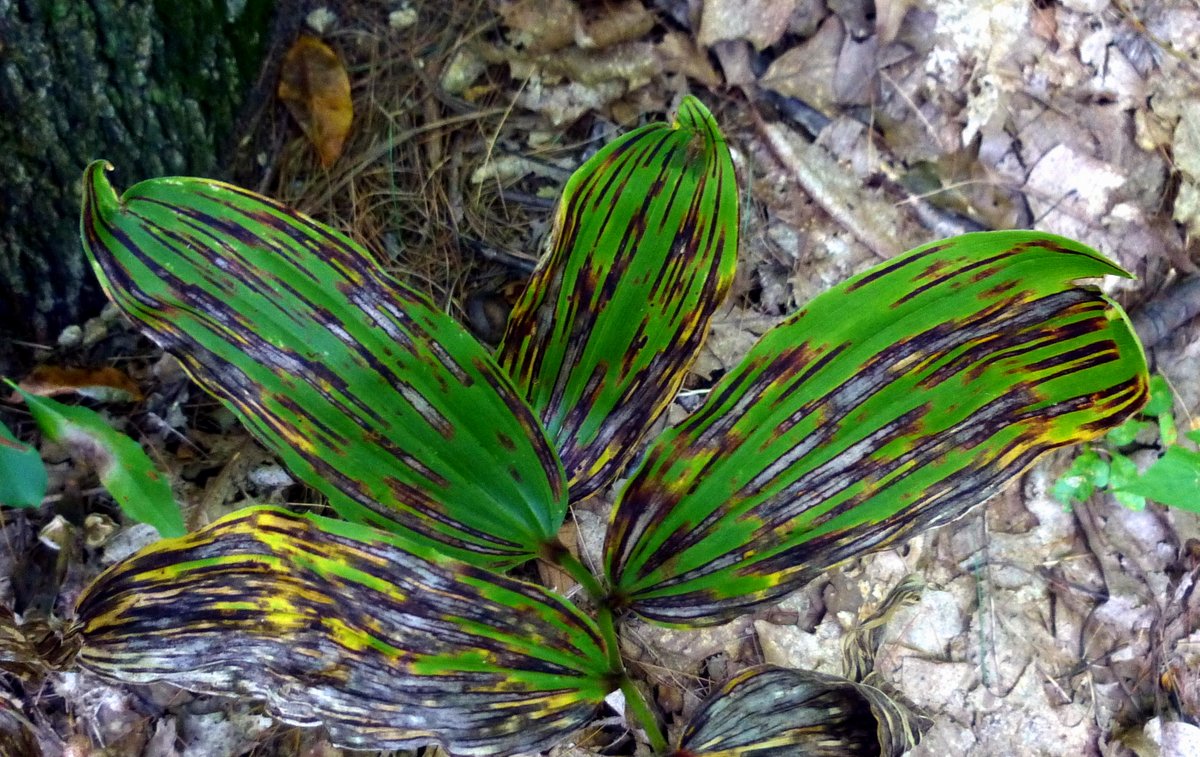

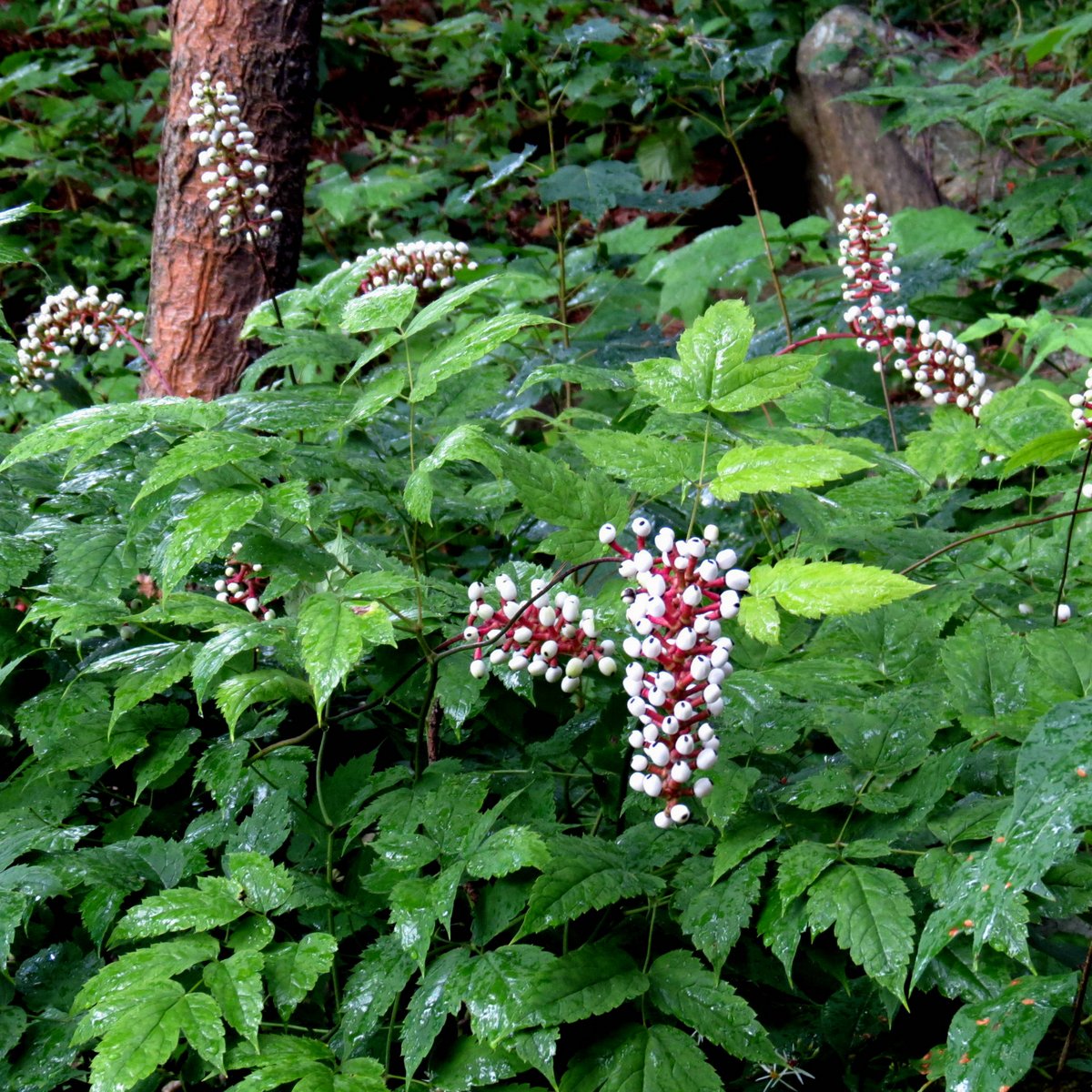

 You can see by the dark areas on the stones how much lower the river is than is normal. You can also see that it isn’t taking long for plants to start colonizing those parts of the bank that are normally under water.
You can see by the dark areas on the stones how much lower the river is than is normal. You can also see that it isn’t taking long for plants to start colonizing those parts of the bank that are normally under water.  False pimpernel (Lindernia dubia) was growing in the wet mud nearly at the water’s edge in a spot that would have normally been under water. These flowers are quite small and I had to re-shoot them three or four times before I had pictures I could live with. This plant sheds all its flowers each evening so all you see is blue / purple flowers all over the ground around it, then the following morning more flower buds open with that day’s flowers. What is strange is that I can’t find any reference to this habit either in books or online, even though I witnessed it on several evenings. False pimpernel is listed as endangered in New Hampshire.
False pimpernel (Lindernia dubia) was growing in the wet mud nearly at the water’s edge in a spot that would have normally been under water. These flowers are quite small and I had to re-shoot them three or four times before I had pictures I could live with. This plant sheds all its flowers each evening so all you see is blue / purple flowers all over the ground around it, then the following morning more flower buds open with that day’s flowers. What is strange is that I can’t find any reference to this habit either in books or online, even though I witnessed it on several evenings. False pimpernel is listed as endangered in New Hampshire. 
 Looking down the throat of a false pimpernel (Lindernia dubia.) This flower has 4 stamens, 2 fertile and 2 infertile. Under its hood, 2 of its stamens curve down like cobra fangs, but no matter how many pictures I took from any angle in any light, I couldn’t really capture the curved stamens. I sure was covered with river mud from trying though!
Looking down the throat of a false pimpernel (Lindernia dubia.) This flower has 4 stamens, 2 fertile and 2 infertile. Under its hood, 2 of its stamens curve down like cobra fangs, but no matter how many pictures I took from any angle in any light, I couldn’t really capture the curved stamens. I sure was covered with river mud from trying though!  I wasn’t the only one who got muddy. The mud was so soft that even the raccoons were sinking into it. You have to be careful where you step because there are some spots on this river-mostly in still backwaters- that contain quicksand.
I wasn’t the only one who got muddy. The mud was so soft that even the raccoons were sinking into it. You have to be careful where you step because there are some spots on this river-mostly in still backwaters- that contain quicksand. 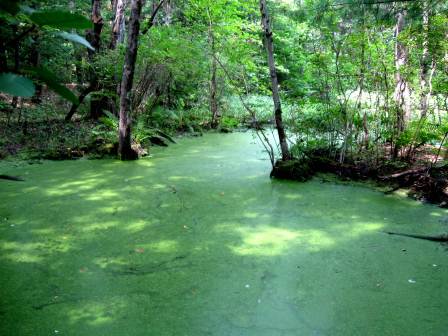

 Be careful when identifying those bedstraws! Most have 4 petals but two of them, three petaled bedstraw (Galium trifidum) and stiff marsh bedstraw (Galium tinctorium) pictured here, have three petals. The flowers are very small-even smaller than those of the dwarf St. John’s wort described previously. Its whorled leaves usually appear in groups of 5 or 6. The odd fruits are pairs of tiny black spheres that each contains 1 tiny seed. This native stiff marsh bedstraw plant grew in moist sand very close to the water’s edge. Another common name for the plant is Clayton’s bedstraw.
Be careful when identifying those bedstraws! Most have 4 petals but two of them, three petaled bedstraw (Galium trifidum) and stiff marsh bedstraw (Galium tinctorium) pictured here, have three petals. The flowers are very small-even smaller than those of the dwarf St. John’s wort described previously. Its whorled leaves usually appear in groups of 5 or 6. The odd fruits are pairs of tiny black spheres that each contains 1 tiny seed. This native stiff marsh bedstraw plant grew in moist sand very close to the water’s edge. Another common name for the plant is Clayton’s bedstraw.

 Forked blue curls (Trichostema dichotomum ) weren’t growing at the water’s edge but grew close enough so the spot will be under water in the spring. There was quite a large colony of 15-20 plants growing here. It’s interesting that Newcomb’s Wildflower Guide says that this is a “plant of dry soil, often found along railroad tracks.” I’ve never seen them along railroad tracks but they seem real happy here in this damp river sand. No matter where they grow I’m always happy to see them-I love the blue color and the crazily bent stamens. Fellow New Hampshire blogger jomegat took the best picture of this flower that I’ve seen. It can be seen by clicking
Forked blue curls (Trichostema dichotomum ) weren’t growing at the water’s edge but grew close enough so the spot will be under water in the spring. There was quite a large colony of 15-20 plants growing here. It’s interesting that Newcomb’s Wildflower Guide says that this is a “plant of dry soil, often found along railroad tracks.” I’ve never seen them along railroad tracks but they seem real happy here in this damp river sand. No matter where they grow I’m always happy to see them-I love the blue color and the crazily bent stamens. Fellow New Hampshire blogger jomegat took the best picture of this flower that I’ve seen. It can be seen by clicking 
 Another trefoil, bird’s foot trefoil (Lotus corniculatus) grows on the side of the river that gets the most sun. Lupines and chicory also grow here-it seems to be quite a fertile patch of ground, for legumes especially. This plant was imported from Europe for use as a forage plant, but it has escaped cultivation and is now found just about everywhere. Its common name came about because someone thought its seedpods looked like a bird’s foot.
Another trefoil, bird’s foot trefoil (Lotus corniculatus) grows on the side of the river that gets the most sun. Lupines and chicory also grow here-it seems to be quite a fertile patch of ground, for legumes especially. This plant was imported from Europe for use as a forage plant, but it has escaped cultivation and is now found just about everywhere. Its common name came about because someone thought its seedpods looked like a bird’s foot.

 Chicory (Cichorium intybus) grows away from the water, but still on the river bank. This is one of my favorite wildflowers and I’m glad that it grows here where it is so easy to get to. I love it mostly because of its sky blue color. One thing I didn’t know about this plant is that the large, half dollar sized flowers shrink up to a small, dried out looking bud in the evening. In fact, the first time I looked at these recently I thought they were done blooming for this year, but then the following morning they were covered with flowers. This plant hails from Europe. It’s easy to see why it was brought to the U.S.
Chicory (Cichorium intybus) grows away from the water, but still on the river bank. This is one of my favorite wildflowers and I’m glad that it grows here where it is so easy to get to. I love it mostly because of its sky blue color. One thing I didn’t know about this plant is that the large, half dollar sized flowers shrink up to a small, dried out looking bud in the evening. In fact, the first time I looked at these recently I thought they were done blooming for this year, but then the following morning they were covered with flowers. This plant hails from Europe. It’s easy to see why it was brought to the U.S. 
